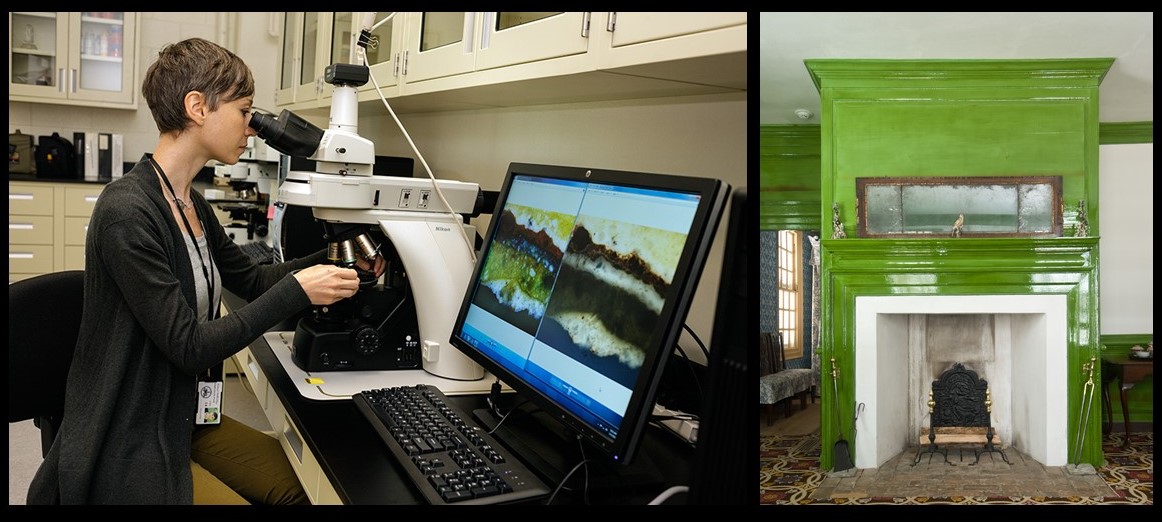New Research Sheds Light on the Eighteenth-Century Verdigris-Green Finish
As we’ve shared in previous posts, one of the department’s current projects is a renewed study and re-interpretation of Thomas Everard’s parlor. This has included researching features such as wallpapers, carpets, and paints which were long ago removed or obscured, yet evidence remains to tell the story. Paint analysis in the form of cross-section microscopy has already helped us understand much about the history of this room and how it would have appeared in the 1770s, when it was occupied by Everard. We have established that at that time Everard painted the parlor woodwork green.
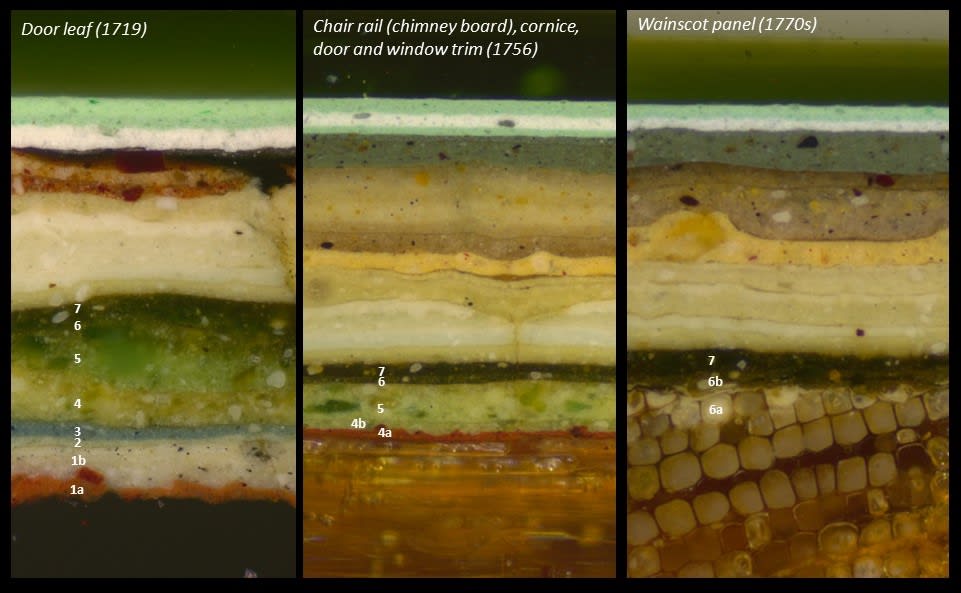
This green paint was made with verdigris, a copper corrosion product, and was relatively expensive in the eighteenth century. While not uncommon in Williamsburg buildings, its use was selective. Patterns indicate that colonial residents tended to use this costly pigment in more visible areas of a house or building, clearly communicating the wealth, status, and good taste of the owner.
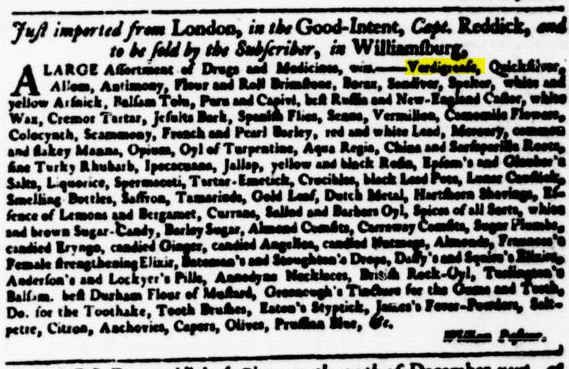
True verdigris pigment was used to make the bright green finish currently in the Everard House parlor. This paint was made and applied in 1995, based on analysis from that time. That analysis included microscopy of removed samples as well as instrumental analysis by outside labs (since we did not have an in-house science lab then). Those results suggested that Everard’s 1770s green paint was made with verdigris in an oil-resin medium (which is largely consistent with our current findings).
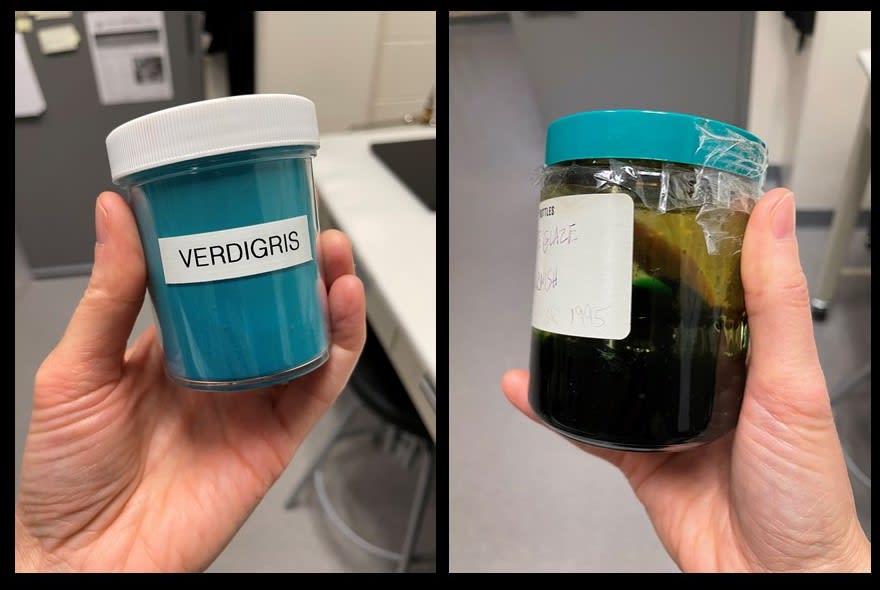
Colonial Williamsburg Foundation conservators used that information to create the “true” verdigris finish there today, by cooking verdigris pigment in a resin (or, varnish). The resulting glossy bright green liquid is known as a “copper resinate,” in which particles of verdigris have completely dissolved into the warm resin. Because this glaze is transparent, it was applied in five coats—one applied each day, according to Foundation records.
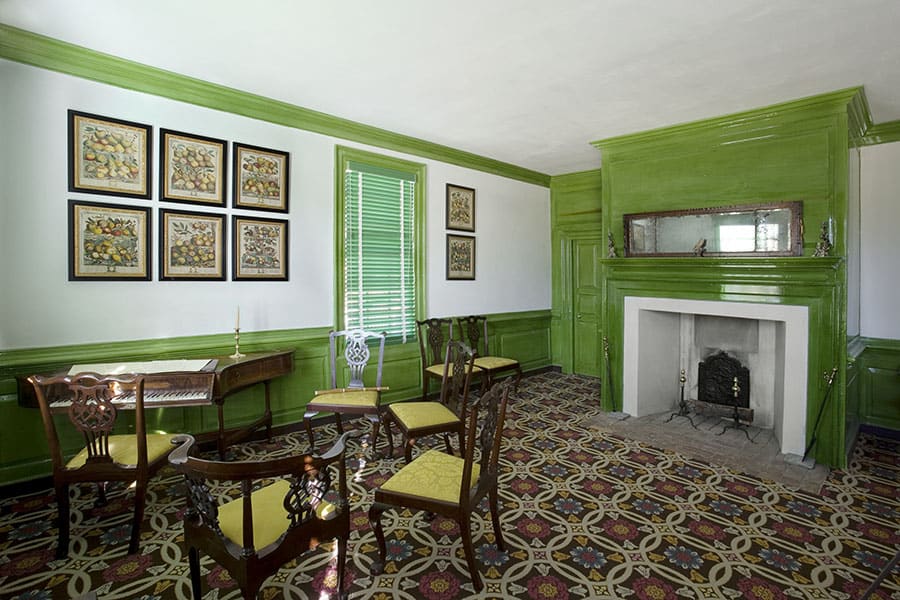
Revisiting the parlor in the twenty-first century gives us a fantastic opportunity to thoroughly re-examine Everard’s 1770s verdigris-green paint in even more detail, utilizing the scientific equipment now available in our Materials Analysis Lab. This will help us understand how it might have originally appeared and to compare it with the current verdigris finish. Some important differences have already come to light. Under the microscope, the 1990s finish has very different characteristics from that in the 1770s. We can see that Everard’s green was thin, typically measuring 20-30 microns, while the 1990s finish was sometimes more than 60 microns thick. Furthermore, the eighteenth-century paint was quite coarse, with large, “chunky” pigment grains of verdigris, as well as large particles of lead white, and even chalk. By contrast, in the twentieth-century finish, the verdigris particles had completely dissolved into the resinous medium, creating a homogeneous, transparent green. These and other differences led us to think that perhaps we could reinterpret Everard’s green in a more accurate way, capturing the characteristics of the eighteenth-century finish.
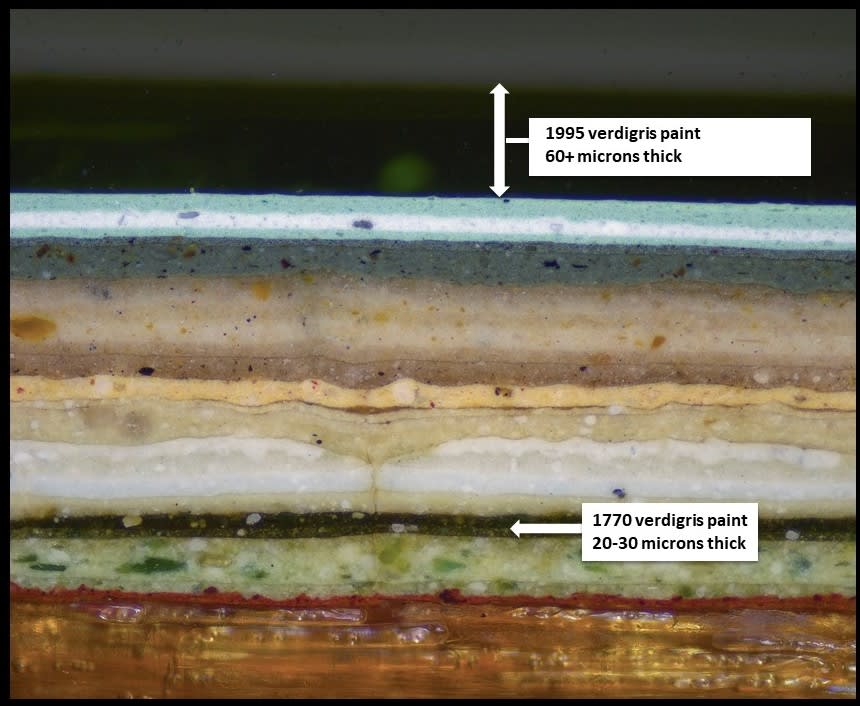
To do this, we must perform a kind of “reverse engineering” on Everard’s 1770s green finish and identify all the original components in the paint. Verdigris can exist in many forms of copper acetate, but we believe we have confirmed the use of “basic” verdigris (copper II acetate hydroxide hydrate), which appears as fibrous bundles under the microscope.
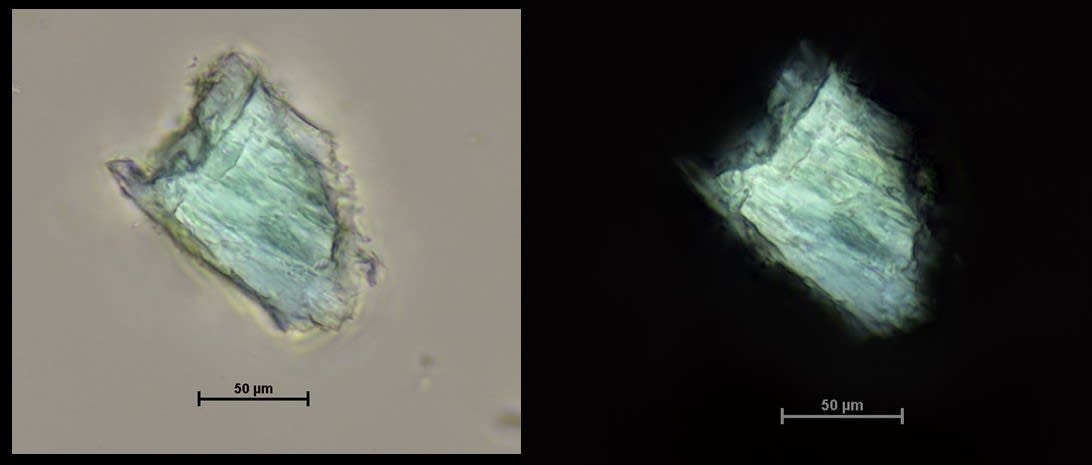
Other pigments incorporated into this paint include white lead, chalk, and yellow ochre (the last, notably, being found only on wainscot panels). In addition to the pigment composition, it is vitally important that we characterize the vehicle, or binding, medium. Is it an oil, a resin, or a combination of both? Fourier-transform infrared spectroscopy (FTIR) has found compounds suggestive of an oil component in the paint, but its glossy nature suggests that some resins (varnishes) might also be present. Samples have been sent to an outside laboratory to determine more about the binding medium, to confirm the presence and type of oils and/or resins, and perhaps give us information about their relative proportions. The presence or absence of a resin will greatly affect the glossiness of the final finish, so we eagerly await these results.
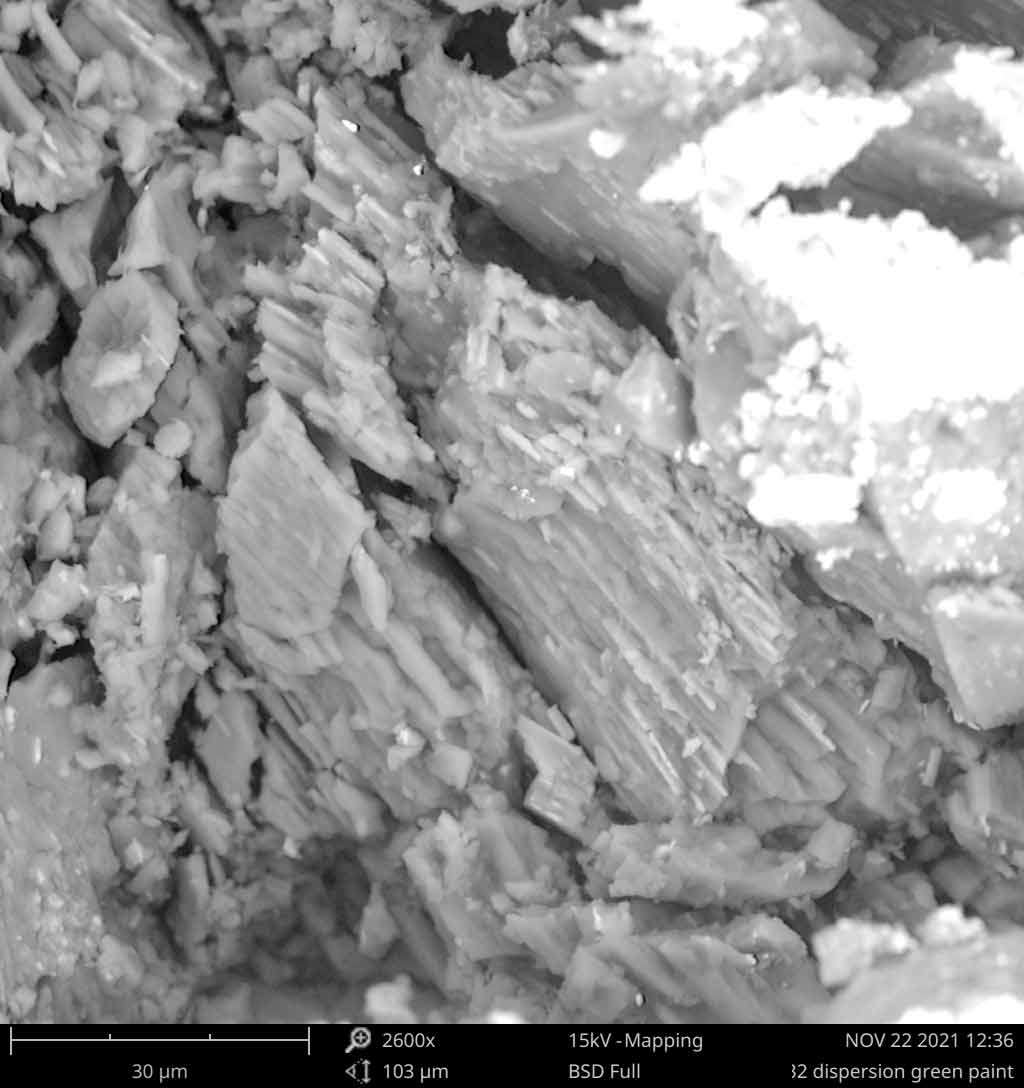
Once we are satisfied that we understand the overall paint composition, we will then use that information to make verdigris paint mock-ups so we can understand, record, and replicate characteristics such as gloss, consistency, transparency, and of course—color! We plan to sample these mock-ups and compare them with the original paint under the microscope ensure that they have the same or similar characteristics. For this stage, we plan to partner with experts in historic finishes replication who have vast experience with making and applying verdigris in historic settings, a unique skill in today’s world. We are uncertain how this final product will appear but, based on recent applications of verdigris in other eighteenth-century buildings, the result could be a darker, richer green than what is currently in the parlor.
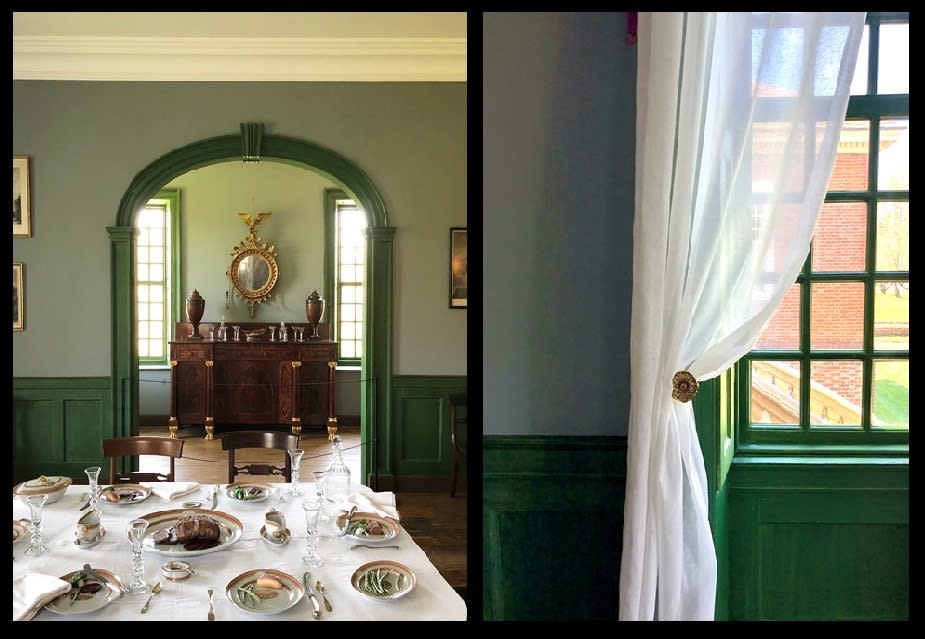
The goal of this project is to obtain a more accurate interpretation of Everard’s parlor in the 1700s, of which the painted woodwork is one important component. Ultimately, the paint analysis findings will have implications throughout the Historic Area, where verdigris finishes have been extensively identified yet are difficult to interpret due to their deteriorated and discolored condition. We are excited that Thomas Everard’s parlor gives us an opportunity to better understand this fascinating pigment and its use in Williamsburg. As we continue this research, we will post updates to keep our followers involved and engaged!
Kirsten Travers Moffitt holds an M.S. from the Winterthur/University of Delaware Program in Art Conservation, where she specialized in the conservation and analysis of painted surfaces. She is the Materials Analyst for the Colonial Williamsburg Foundation’s Conservation Department and is responsible for the analysis of collection materials including metals, ceramics, textiles, furniture, and architectural finishes such as paints, limewashes, and wallpapers. She specializes in historic paint materials and technology and shares her research through lectures and publications, both within the field and to the general public. Kirsten truly loves watching paint dry, and her analytical work contributed to Benjamin Moore’s Williamsburg Collection paint line.
Colonial Williamsburg is the largest living history museum in the world. Witness history brought to life on the charming streets of the colonial capital and explore our newly expanded and updated Art Museums of Colonial Williamsburg, featuring the nation’s premier folk art collection, plus the best in British and American fine and decorative arts from 1670–1840. Check out sales and special offers and our Official Colonial Williamsburg Hotels to plan your visit.
